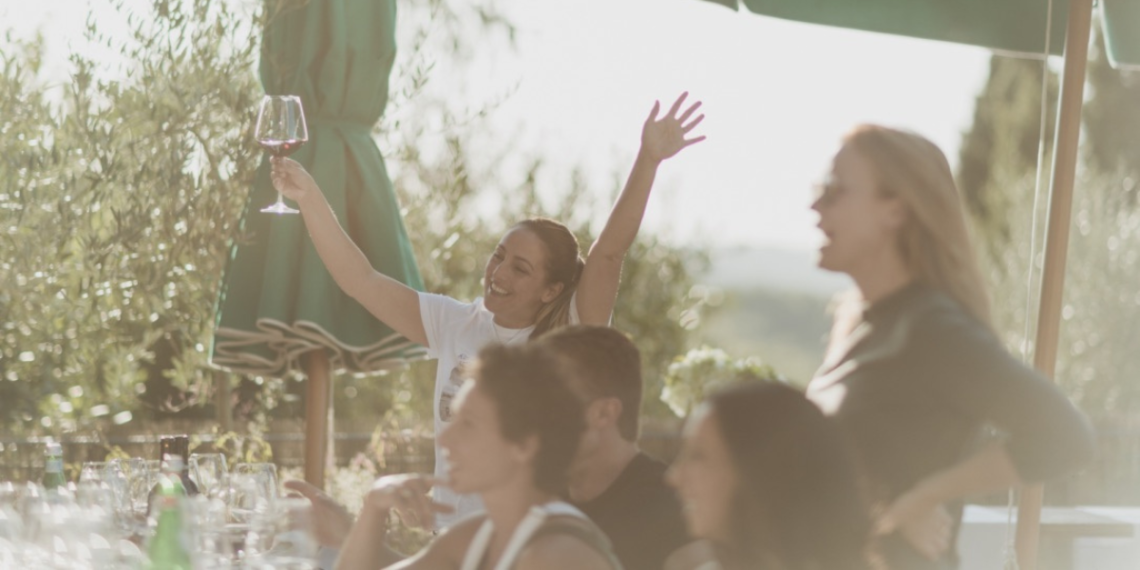
Life Lesson from Italy: The Art of the Long Lunch
Il Riposo – The Long Lunch
The Italians know that one of the most important rituals of humanity, longevity of life and true fulfillment is eating together.
The riposo or long lunch with family/friends is a tradition, if not an art form in Italy. The riposo is essentially the Italian equivalent of a siesta, a midday break when shops close and workers go home to have a long lunch or even take a refreshing nap before heading back out to finish their day. Long lunches are an integral part of local culture and are not compromised by obligations such as work.
This may puzzle or annoy the American arriving at a shop at 1pm only to find it closed until 4pm. However, if you can look past your own inconvenience and think about the positive impact this can have on a community and families.
The working mothers head home to make a delicious pranzo for their children, home for lunch from school. The working fathers get to take a break from their lavoro (job) to enjoy time with their family, a beautiful lunch and most likely a nap. Employees arrive back to work, refreshed, fulfilled and ready. Isn’t that an important tradition worth a little shopper inconvenience?
As an expat living in Italy, we learn to adopt this strategy ourselves, taking a midday break for lunch, connecting with friends and family, or even a nap, senza (without) the guilt.
The Italian Long Lunch is an Artform
On the weekends, long lunches are transported from the city streets to the Tuscan countryside often with tables of 10-20 amici e bambini (friends and children) gathering to celebrate nothing more than a beautiful day with their family and friends.
These long, countryside lunches unfold as if there’s a director in the wings.
As each family arrives, you hear “Ciao Amore” senza any reference to their tardy arrival. Each guest is, of course, impeccably dressed, as if there’s a spring countryside lunch section of the local department store Rinascente. Their children gather excitedly and together explore the gardens or vineyards. To the joy of the parents, not one child is asking for an electronic device.
As the wine glasses are filled, no one wonders who ordered it, however their review will be provided after the first few sips. At the perfect moment, il cameriere arrives and orders are placed – pasta pesto, pomodoro or ragu for the ragazzi. Then the antipasti, primi and secondi are carefully discussed, as if it’s a matter of national security.
Finally, the selections have been made and it’s back to the conversations. The conversations range from the new seasonal foods that have appeared at the market and local politics, to recanting stories from the past or making group travel plans for the summer. There is one subject that is considered brutta figura if brought up at the table, and that’s… business.
Il cibo arrives in perfect Italian timing, as if the director in the wings gently says, cue the gnocchi. Nothing is rushed. The conversation and vino flows effortlessly. You hear the adults suggest to the children, mangia per favore. The children oblige. They eat, then play, then eat, then play. They’re free to explore, roll down the grassy hills and just be kids. Until… il dolce arrives, often it’s gelato on a warm day.
Before you realize it, four hours have come and gone and the cafe has arrived. There’s only one thing left to discuss, what will you eat for dinner.


One Comment
Simi
I really enjoyed this article, and in my calendar now have “Il Riposo” scheduled. I recently moved from Toronto to Princeton NJ, however, when I lived in Paris and Berlin years ago, I remember taking my lunch to a public park, and enjoying just eating in nature, in community, and watching the world unfold in front of me as if I was apart of something bigger than myself– it was nourishing in comparison to simply eating at home on a timer whislt waiting to get back to work. Although I’m not in Europe at this time, I’m inspired to kickstart this ritual again xx